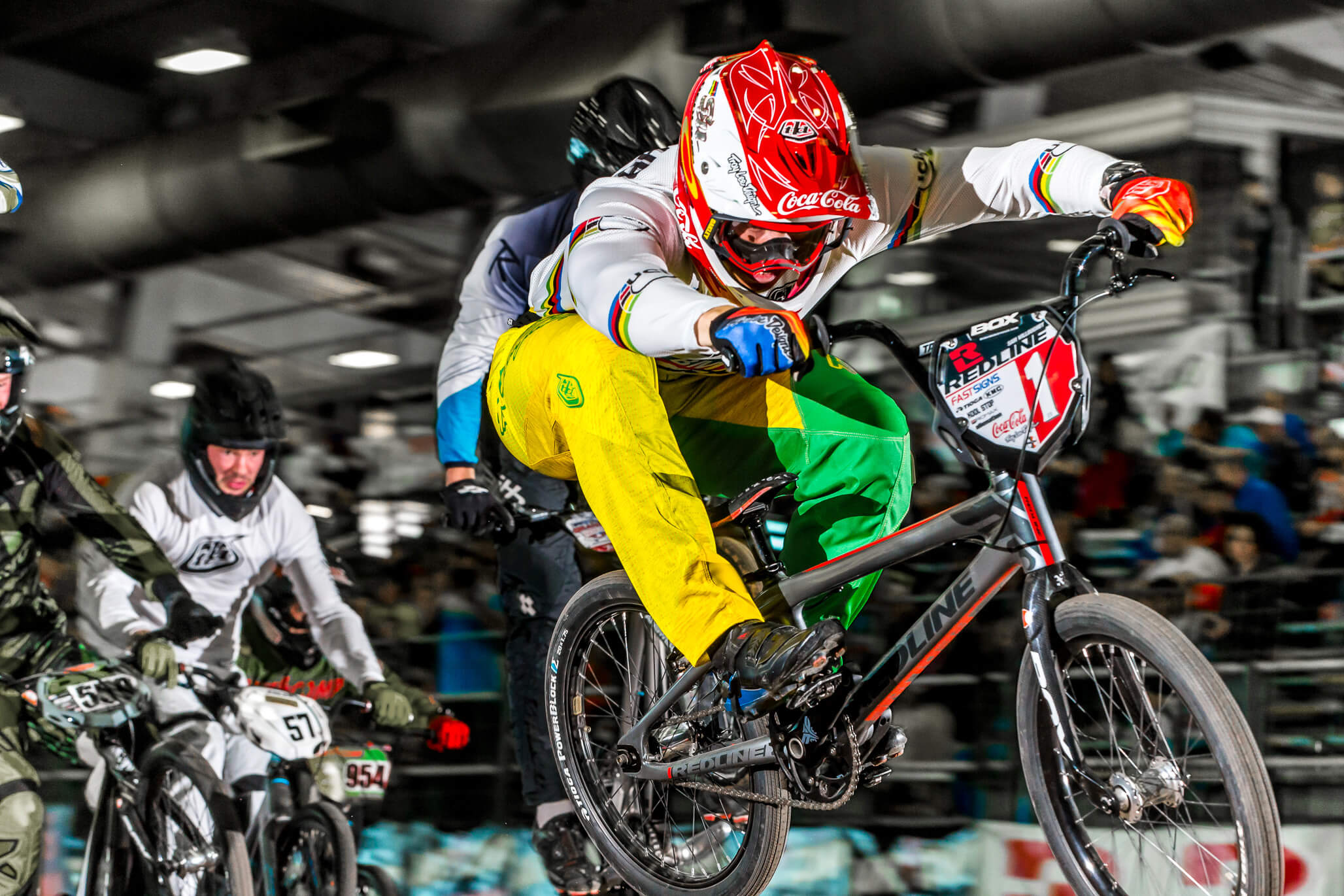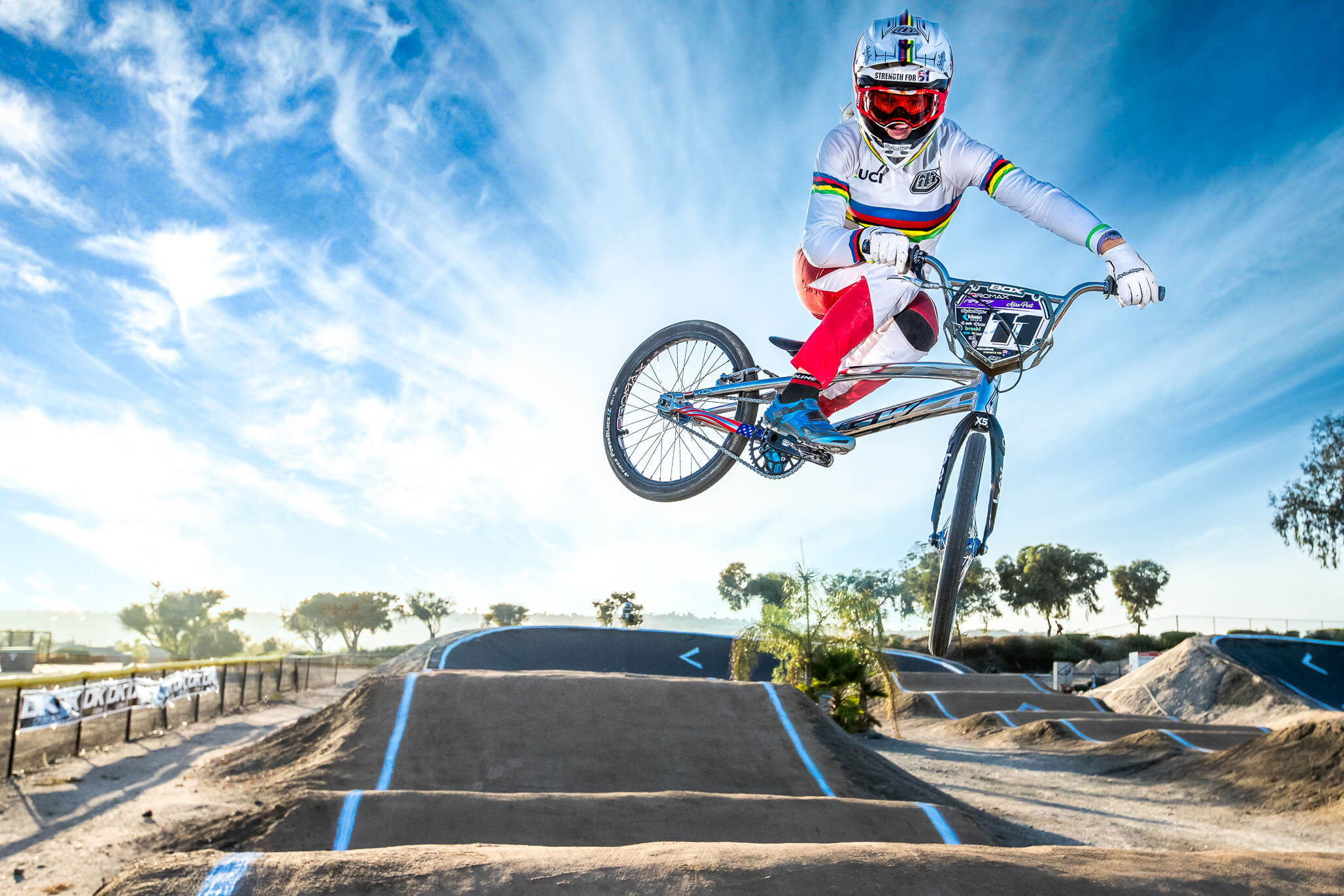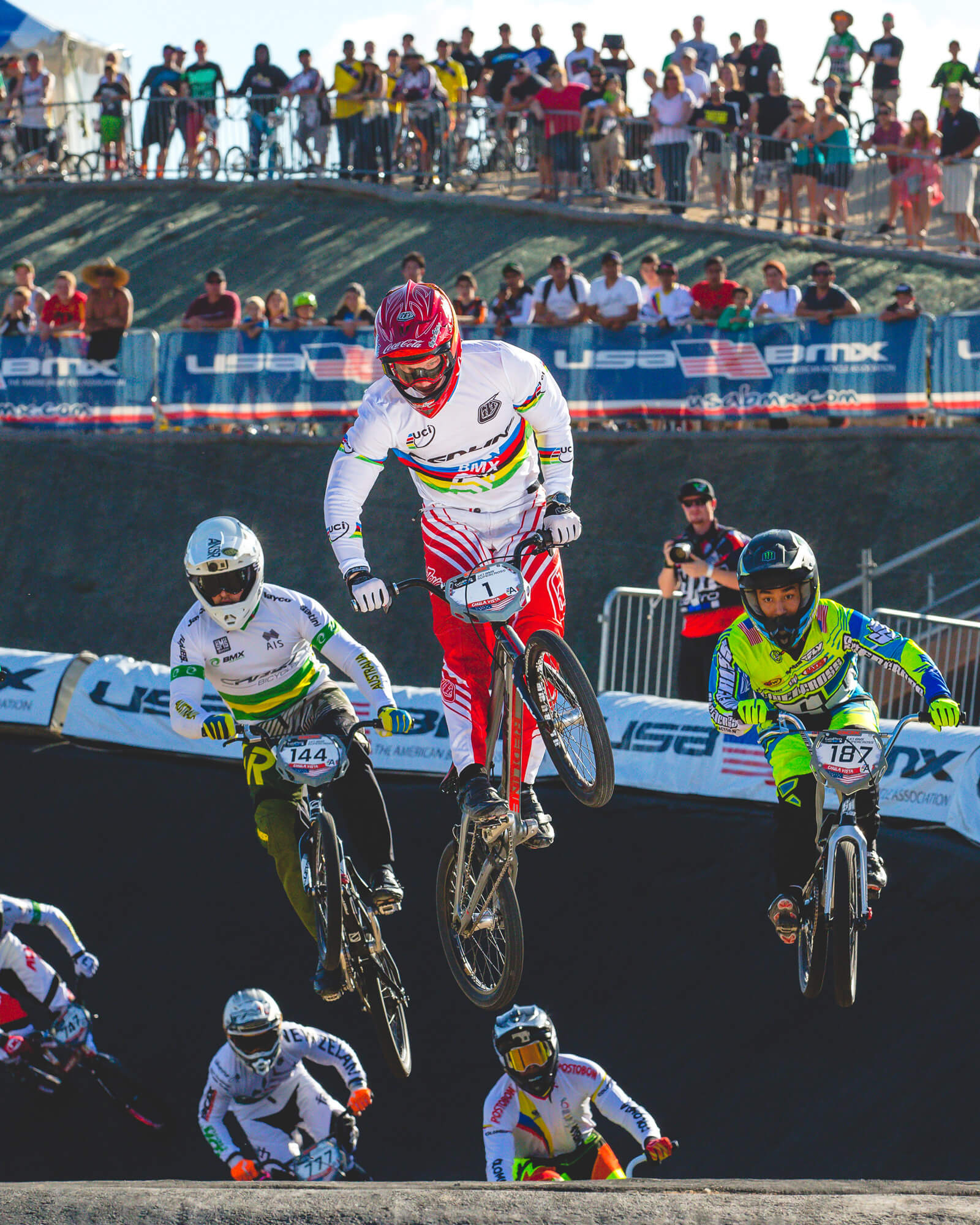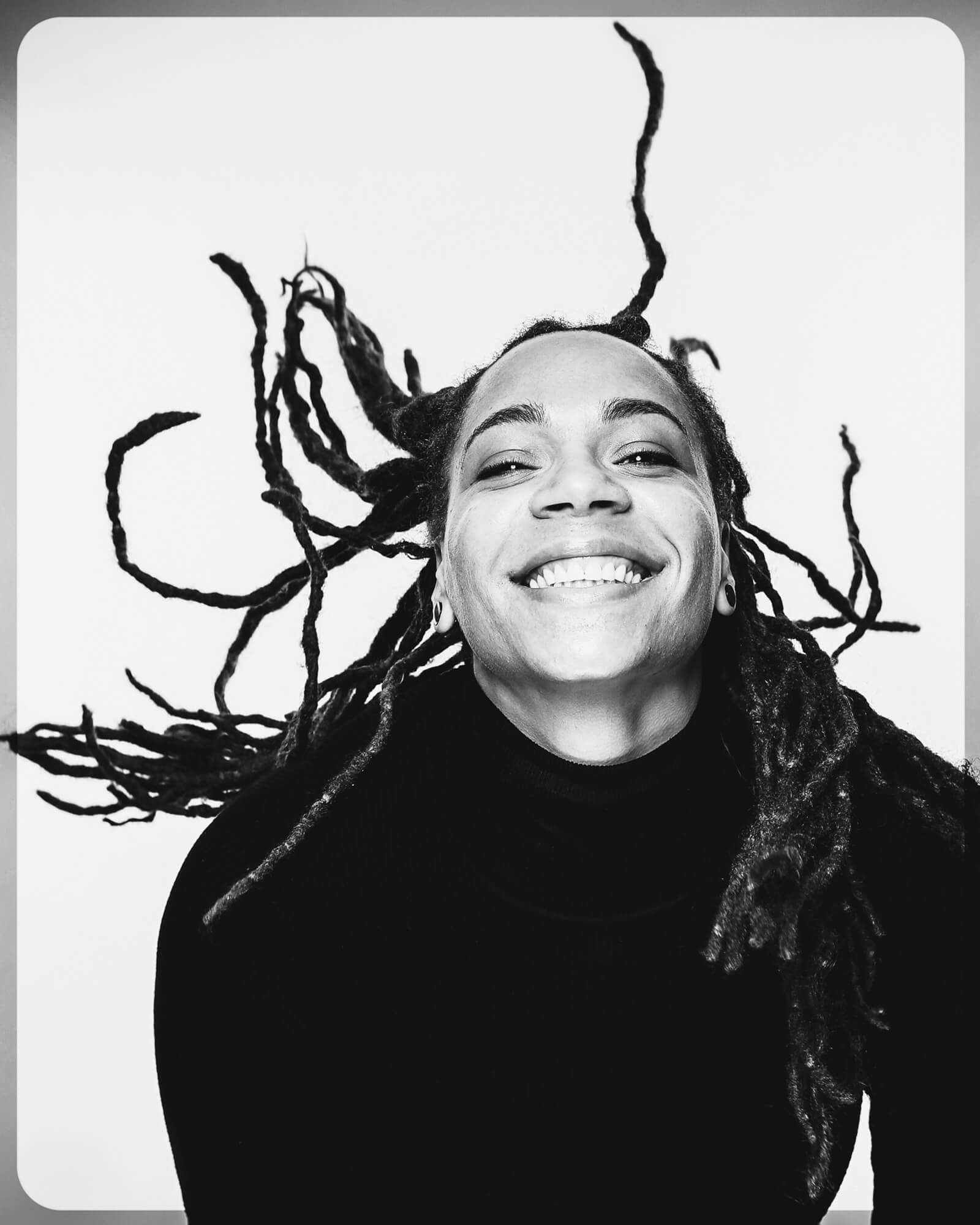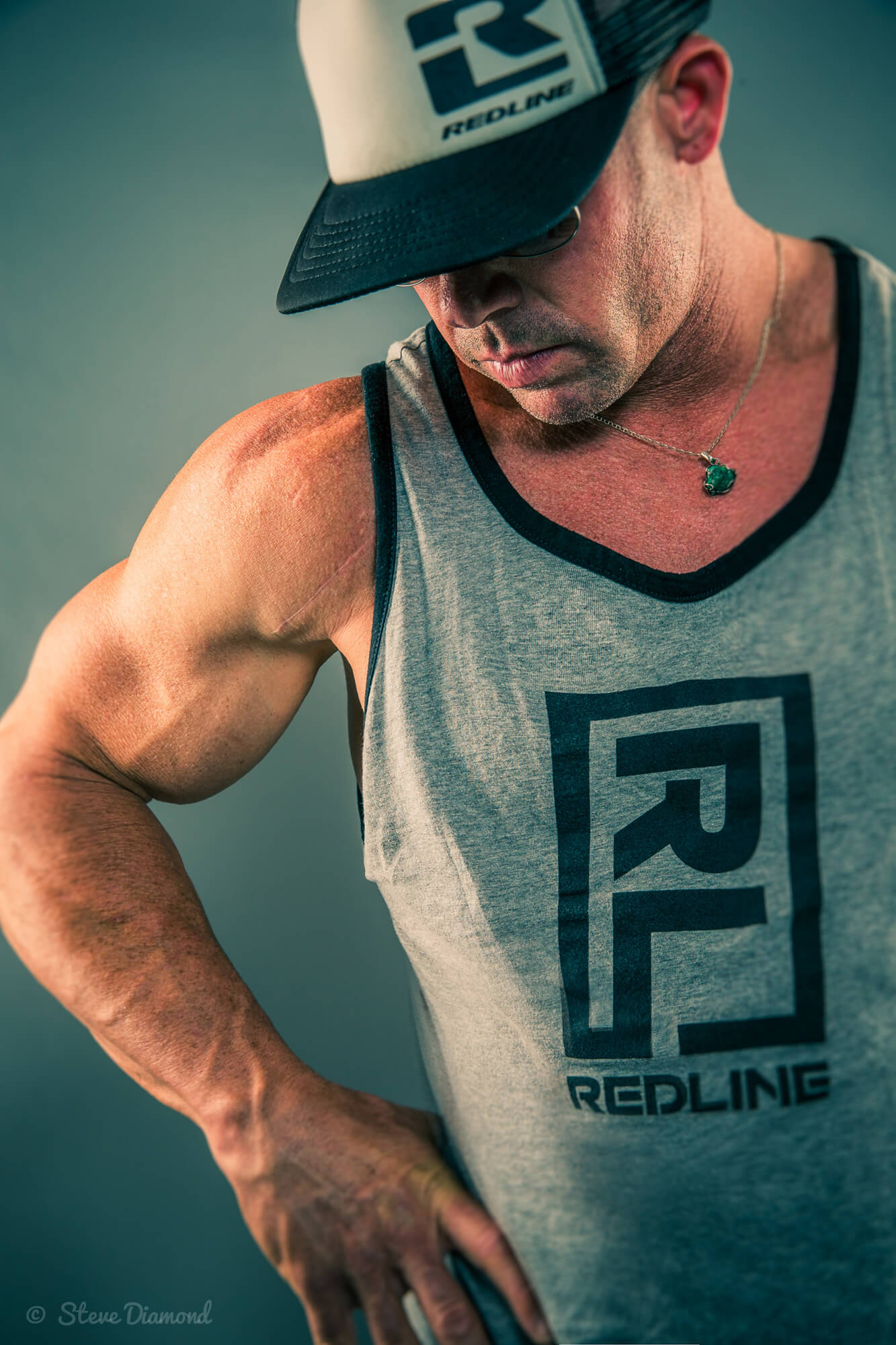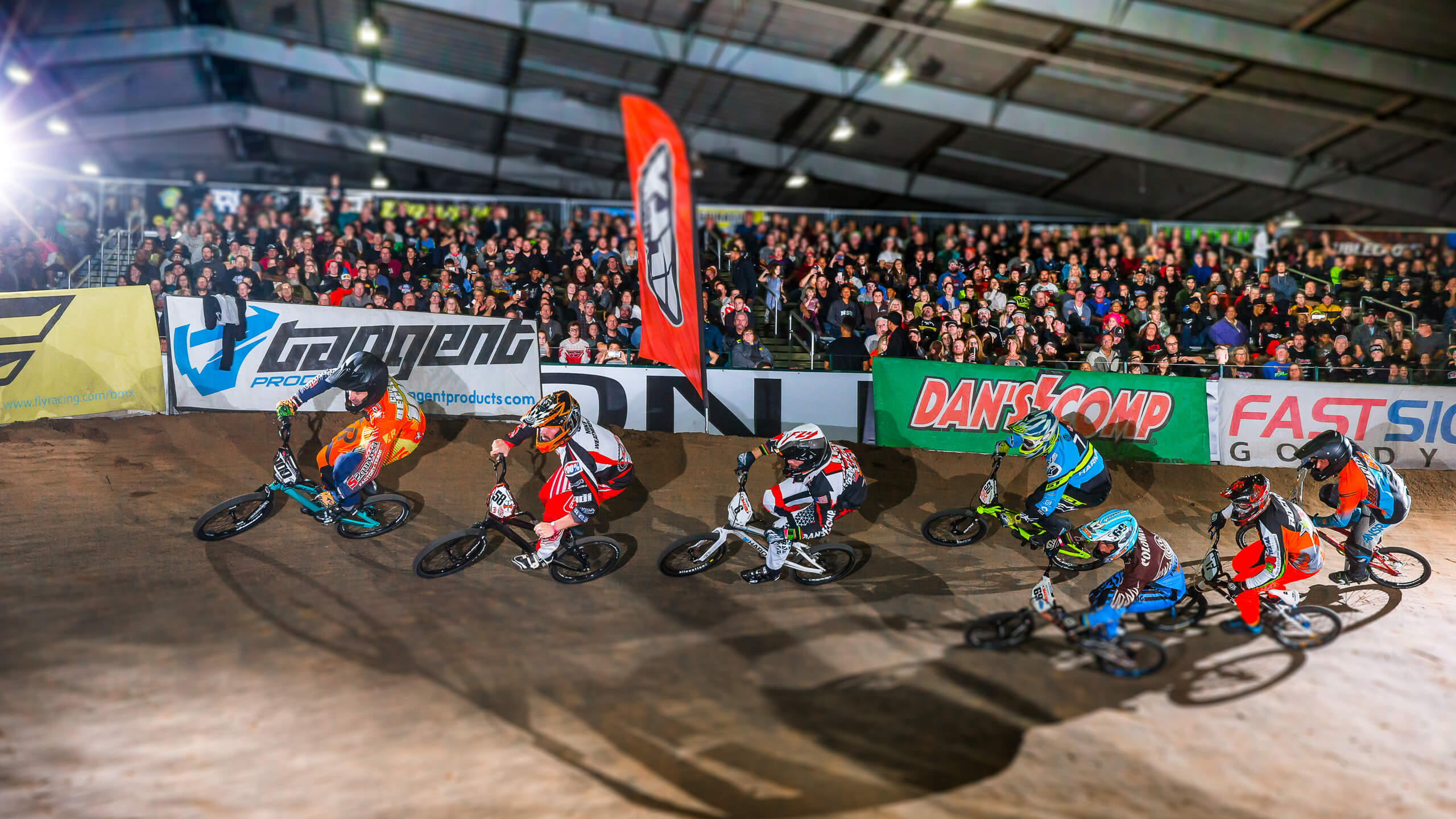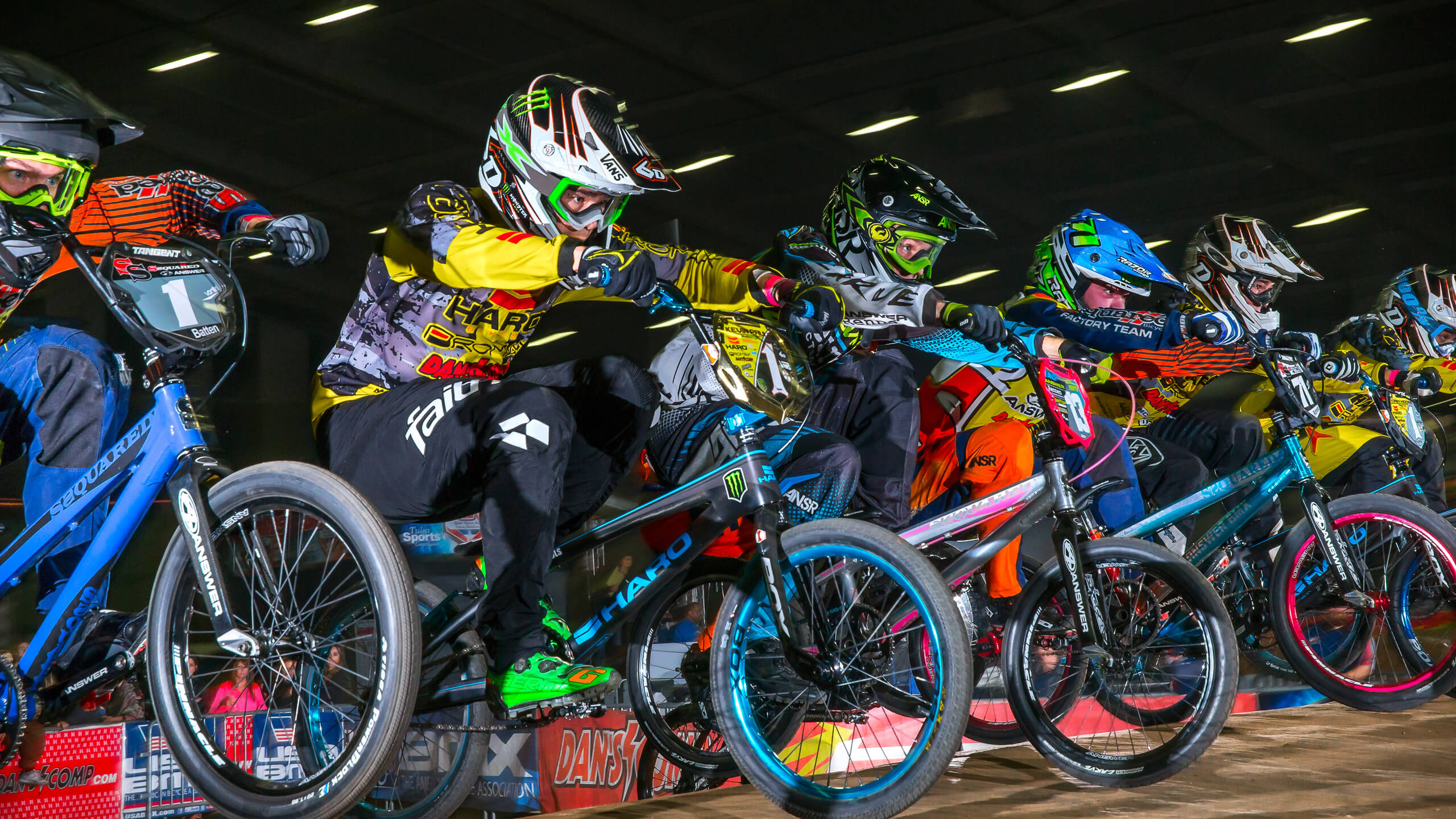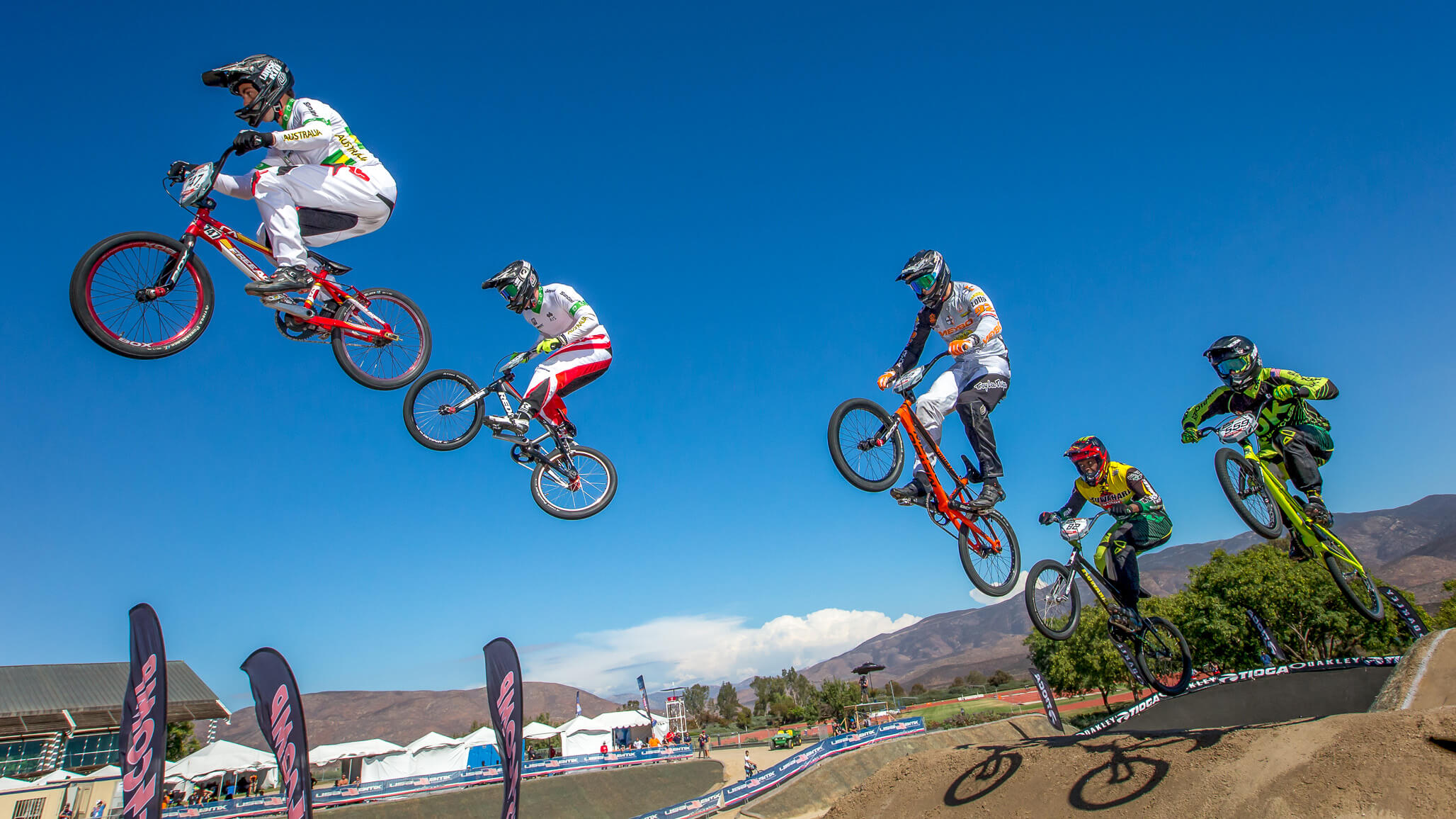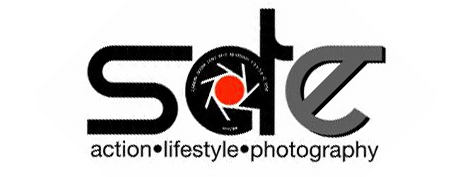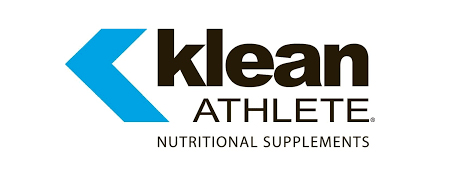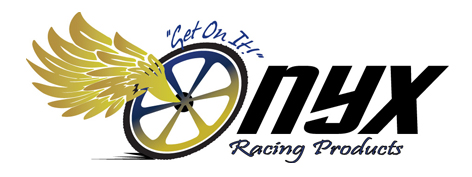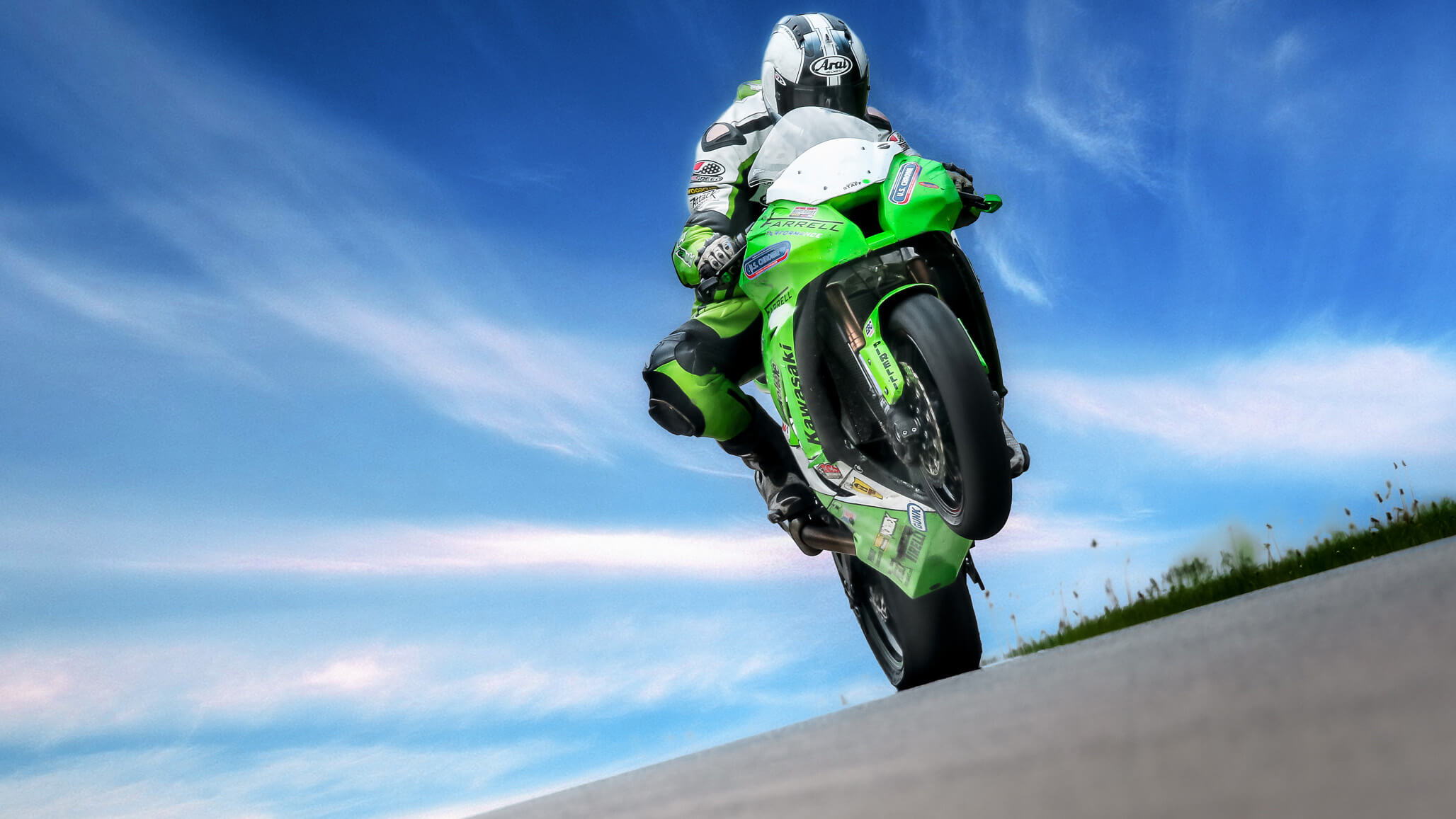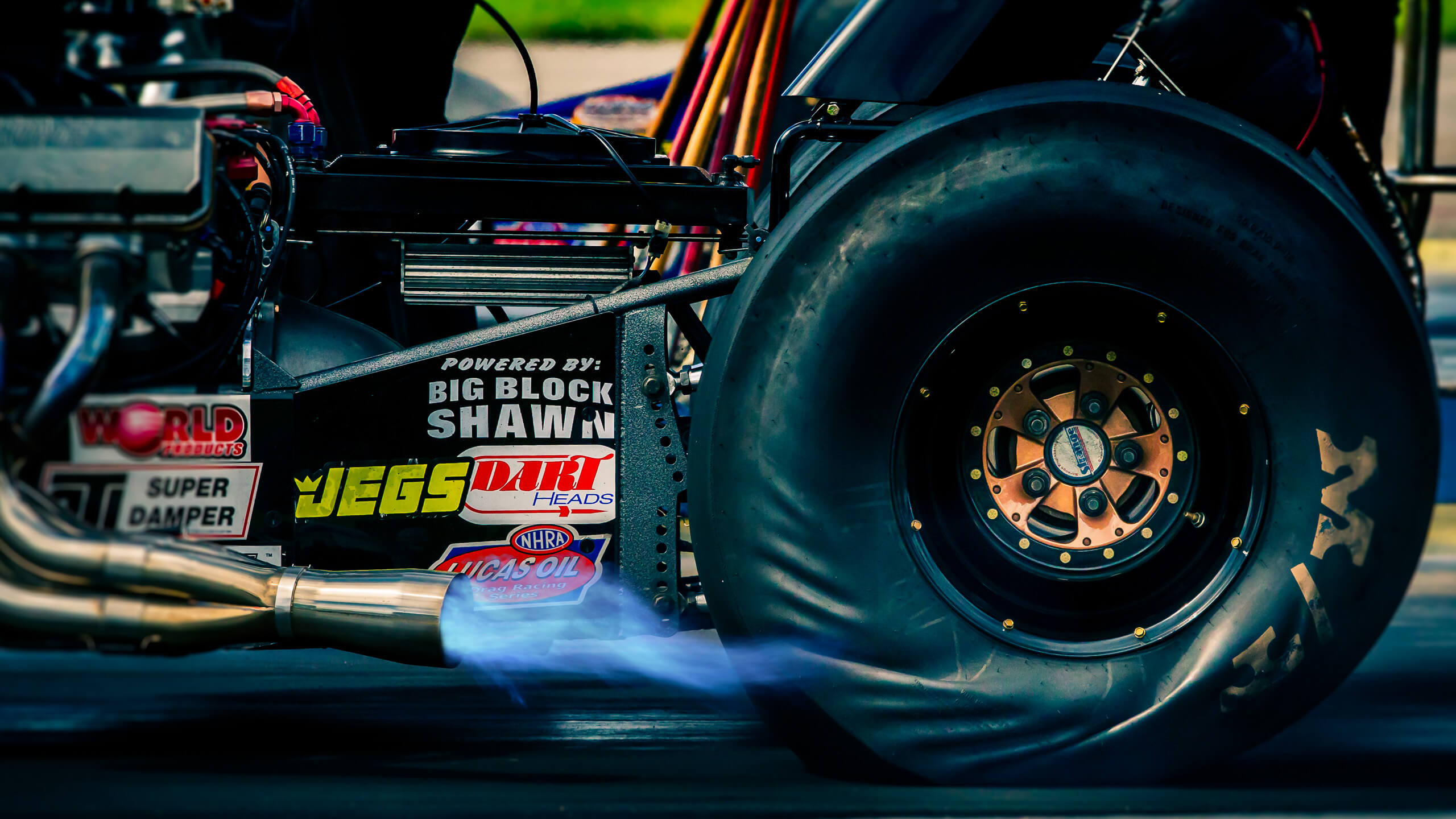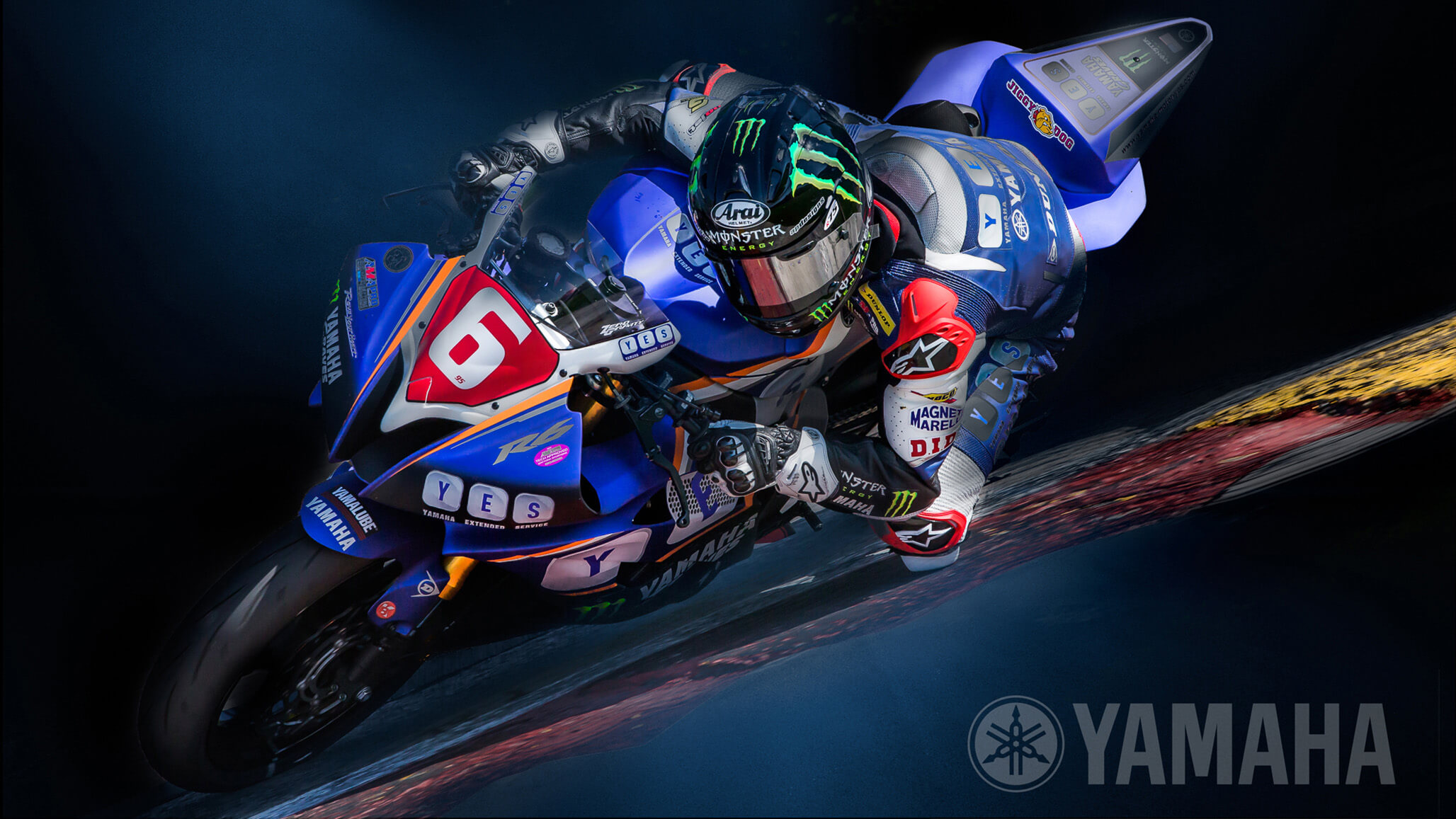Steve Diamond | BMX through the lens
December 2017
Steve Diamond | BMX through the lens
December 2017
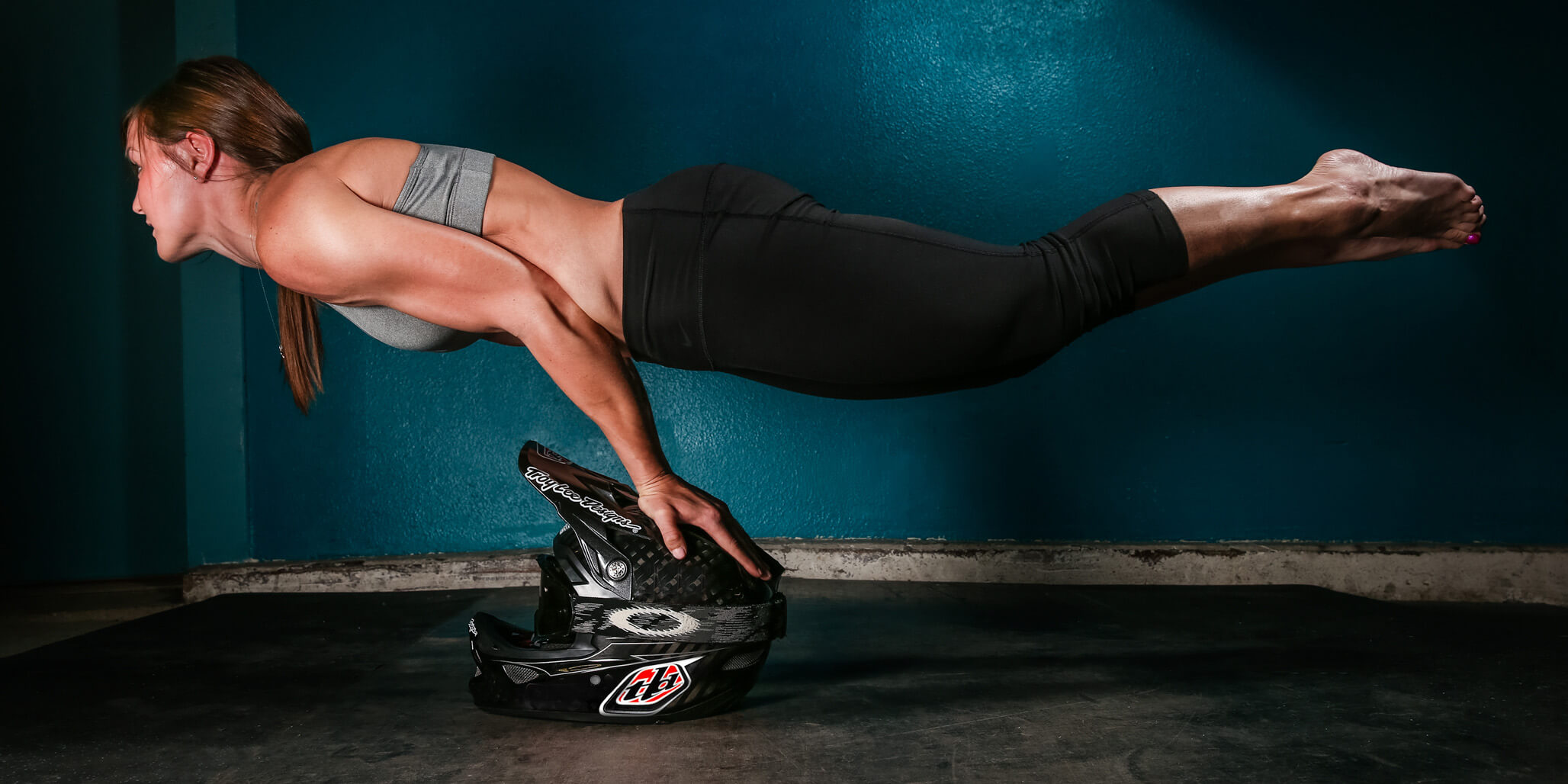
15: We guess the first question would have to be, how did you get involved in photographing BMX? What came first, the bike or the camera?
Nick: Actually the bike came first, but not a BMX bike, it was a motorcycle. Previous to my transition into pro photography I was a superbike racer for over 10 years aboard Suzuki sponsored GSXR 600’s, 750’s and1000’s. Photographers were our rockstars, as they captured us at our finest as well as moments of disaster. I was always intrigued by their angles, track access and knowledge of our sport. Once I retired in 2011, I knew photography was my next challenge.
15: Everyone knows you as ‘Steve Diamond’ but that’s a pseudonym, right? For those who missed the explanation on Café Willoughby …
Nick: Ah yes, ‘the’ question I should really print the answer on a card to hand out… Totally my own fault, but never the less, hear we go! I am a proud Neil Diamond fan, and one day back in late 2011 I had removed my personal account from Facebook. Just needed a break after my racing career ended. I did however have access to another account I had created for a racer friend of mine (we will call him Aaron Anderson, because that’s his name…) but he would never log in and join the banter. After a few days break, I started logging into this account and lurking upon the 35 friends I had setup prior, one being my wife. She, not knowing I could see it, posted a question on FB – asking “If I were to get tickets for the Neil Diamond concert coming up as a gift to a huge fan, what are good seats?” I promptly changed the account named from A. Anderson to ‘Steve Diamond’ (aka Neil’s fake brother) and since I was a “friend” could comment- and said “First row or nothing lady, and this is coming from Neil’s brother.” Needless to say, people where quite shocked and I received great tickets. Down the road a bit I had acquired my first DSLR camera (Canon Rebel t3i) and a friend asked me if I would do beginner classes in digital photography at the local Community Education Center, I said yes. An administrator called me shortly after needing business info for payment and whatnot, I said thinking quickly on my feet “Steve Diamond… Elements. You know, like the elements of photography?” She said, “Yup.” The rest is ya know…
15: You obviously have a relationship with Alise and Sam, pretty good muses to have … what stars aligned to draw you all together?
Nick: Prior to getting my first camera, my daughter (6 at the time) and I started racing at Pineview Park BMX. We were fortunate to have the track within 5 minutes of our home, and got to know the Track Operators Mark and Cheryl Post (AP’s parents) very well. Cheryl and I had many talks about photography, as she was interested in it as well. I had just gotten through my first Fall and Winter of 2011 with my first camera shooting local amateur skateboard and snowboard comps, and in the Spring asked if I could shoot some BMX at their track. I offered to give the track any images the “turned out” as a thank you for the opportunity. After a few months of doing that, Cheryl mentioned her daughter (Alise) may need some photos taken, was coming to town soon, and would I be interested? At this point I had been a proud owner of a camera for roughly 6 months… I bravely agreed, thinking she was simply being nice, that Alise would clearly have some strong opinions about this, and I would be off the hook. Phone rings, and it is Alise Post. We set up a time, location and concept for the shoot, and to this day is still one of our favorite sessions. We have since done countless shoots, she is very creative and trusting something I value greatly. Our recent video shoot for Promax for example, she authored the branding tag line “BE YOUR OWN PRO” and the company completely embraced it. Our next big project together is her and Sam’s wedding on NYE this year in San Diego. I am so honored to have been asked by these two to cover their day. It really has been a fantastic journey with them both, and you will never find more dedication and motivation on tap.
Watch the Promax ‘Be Your Own Pro’ video HERE
15: You’re just back from the USA BMX Grands in Tulsa, did you enjoy the racing … front row seating has got to be great?
Nick: The racing is always top notch at the Grands, especially when we get to Semi-Mains, that’s do or die for so many. But to be honest my attention is mostly consumed by two things; safety and getting the shot right. I rarely pay attention to who did what after they leave my location, I can always find that out later- my focus is now on the next race and how I can tweak the shot for it. Like I have joked about in the past, the ‘access’ I have available to me many times outweighs my interest in photography, but there is truth to it. Being a past racer, I have grown accustomed to being in the ‘hot’ zones of a race facility, some are quite deadly if you get it wrong. I also love the sights, smells and physicality of being very close to what is happening. Many die hard BMX fans probably are not aware that when the Pros rip by you at full speed on an asphalt turn, the powerful blast of air will knock down banners and is accompanied by the wonderful smell of burning rubber from their tires. Being a few feet away from these top athletes, male and female, going all out elbows in each other’s chest, and feeling the ground actually move is something every fan should experience at least once. I never take it for granted. It also comes with great responsibility, as I limit my movements when I am visible to the racers, always look UP-TRACK every time when crossing, even for the 5 & Under class, just a great habit to get into.
15: We gather you were in Tulsa working for USA BMX? What’s the photography goal from their perspective … documentation, promotion?
Nick: USA BMX flies me in for this event and the objective has developed as we have gone along. Much of what you see in regards to banners, graphics and general branding at Grands uses my images. I work hard to get them shots that should convey the energy and effort the event provides both racers and fans. Shots that include tight action between many racers, and also illuminating the trackside sponsor branding brings value in the shot. Seeing my images used in such a professional and large scale is always jaw dropping for me. The USA BMX Media/Graphics team really knows their stuff and I trust them with mine 100%. The images will be paired with Gork’s article as well as his amazing shots. This guy is a legend, I love working with him (and he drives his rental cars like it is the Indy 500, and I can appreciate that…).
15: When you walk through the doors to an event like the Grands what’s the first thing you’re looking for? Are you walking the track for that perfect location … are you pre-planning shots?
Nick: With an event like the Grands, you definitely need to pace yourself input-wise. Even for a seasoned shooter, it can be very overwhelming both visually, as well as the overall volume. There is also the pressure of the track schedule, and when your subjects will be out there. Grands is like being at a casino, it always looks like noon, and if you are not careful time can get away from you in a hurry. I generally make my way down to the Media Area, and begin unpacking prior to a track walk. This allows me to relax, regain any composure needed, and focus on my gear before I add in the track information. If I am thinking about the track while setting up my gear, I am more likely to overlook a setup step- not worth it. Once I am “shoot-ready” I walk the track, making mental and sometimes physical notes about potential scenes that have all the elements I require. Notes on lens length, light positions, background elements and how compressed the action will potentially be all play into designing a scene.
15: Is there any rider on the gate that makes you sit up and get ready for the shot? Who’s particularly photogenic?
Nick: From my perspective, and how I tend to shoot, I am looking for who is going to be out front. At the Pro level, and if I am watching the gate, they all come by as a group, so singling them out is near impossible. Luckily, I have been fortunate to always be working with the folks out front, Alise and Sam, thank you! Currently riders like Connor Fields, Anthony Dean, Joris Daudet for the Elite Men, and Alise Post, Lauren Reynolds, Brooke Crain for the Elite Women have my attention if I am watching the gate for a shot coming down the first straight. I watch them approach and if someone else grabs the lead I instantly change my focus on that lead rider. I need to choose who is my focus, and it needs to be the person out front, plain and simple. Now, during Pro warm-up, it is anyone’s game and many throw style our way, and it benefits everyone. I encourage any rider to give me a signal if they want a shot, warm-ups are a great opportunity for an up and coming pro to get great images to use for promotion. Mainly because once racing starts I am generally taking 1-2 shots per race, that is it. And they are usually for that first rider, as it is all I have time for. Very happy to hook up any Pro out there though, just let me know you are going to send it!
15: From your unique perspective of BMX Racing would you change anything about the sport, the tracks or even the way events are run?
Nick: This may sound like a safe answer, but no. My involvement being a photographer occupies enough of my time and focus. We all have opinions, but what I know best is BMX imagery, and what I can only assume administrators know best, is the logistics of running and organizing the sport. I have the big picture on only what I do, limited by design on the other aspects of the sport. And I like it that way.
15: BMXer’s are always in discussion to pick the all-time best rider, do BMX photographers have similar conversations? Do you ever go old school and study shots from the likes of Windy Osborn?
Nick: I will be real honest here, aside from GRANDS I don’t have much contact with other BMX photogs, outside of some fun banter online. Additionally, I have not been a part of the scene for very long, so my history of BMX from a racing perspective is very limited, let alone the pioneers of the sport on the bikes or those behind the lenses. I have never even shot film… I was a huge fan of BMX Plus/Action as a freestyle kid on my GT Pro Performer, and loved the images in the available magazines of the day (I am 45 now) but again was not a study of the who, what, where. As a photographer I study the works of countless others, some have been cycling shooters, and many are studio based. Time these days feels so limited, so unless I am seeking information on something or someone, I rarely study for the sake of studying. I find in situations that I am shooting available light (generally outdoors) I gravitate to a more vintage stopped down style that is very enjoyable and most definitely influenced by previous eras of photography. Really helps me personally balance the two worlds available to me. Currently BMX makes up a very small portion of my company’s workload, so returning to it like this feels fresh and I appreciate it even more.
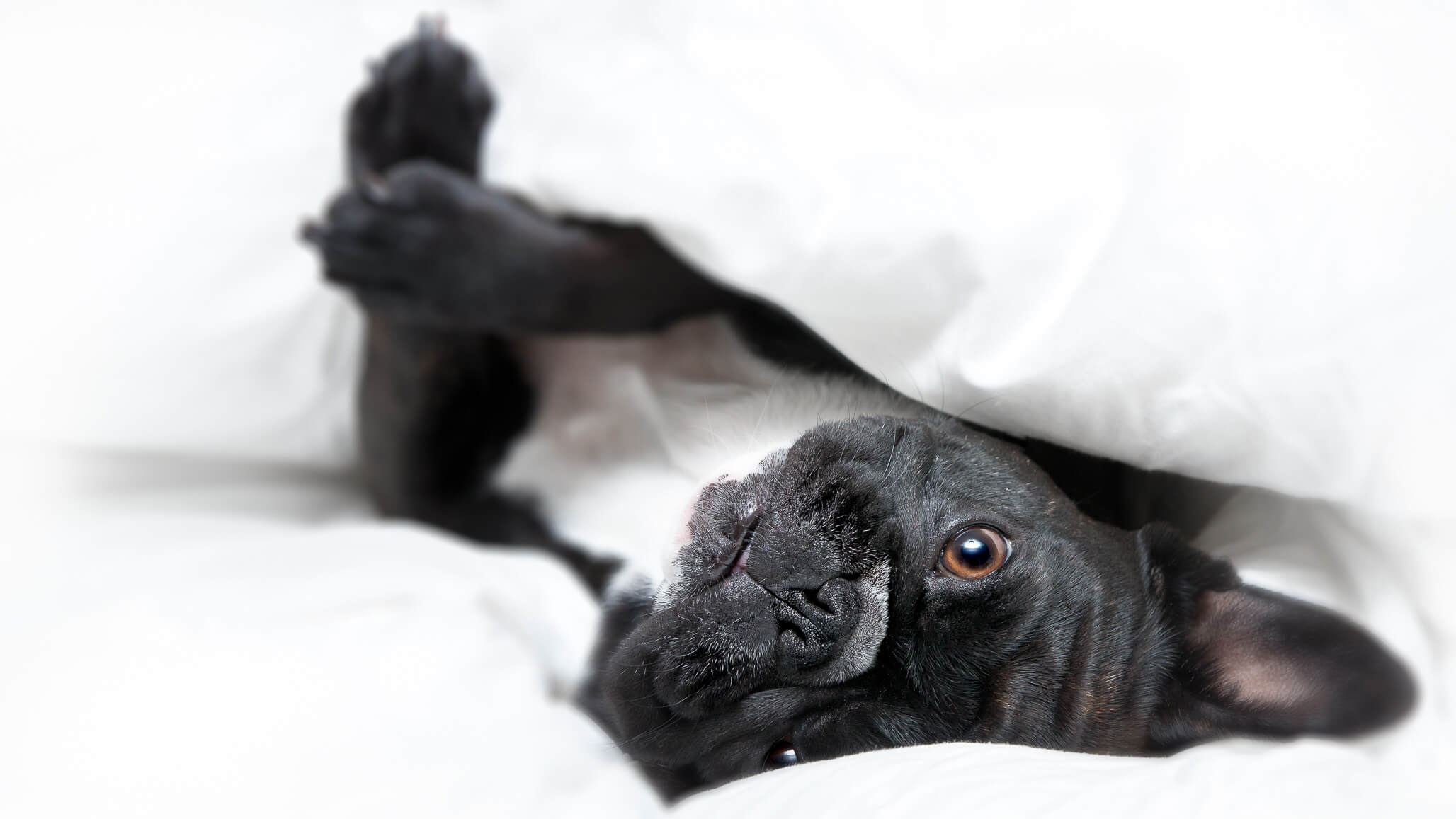
15: All your contemporary BMX photographers have individual styles … are you drawn to any one in particular?
Nick: Styles are abundant in every aspect of photography I work within, and if created with care and strong decision making, can all be pleasing to the eye. I see many trends in BMX imagery, and feel again, it is all a matter of taste and why… Photo Styles or Editing Styles really come down to two scenarios in my mind. Those that shoot unaware and use editing to hide or over-correct a scene, and those that use editing as the next logical step in their image development. I was DEFINITELY part of the first scenario until I started hating how much time it was wasting on “editing” images that were junk out of camera and had no continuity within the set. Style can be art, photography can be art, it really comes down to intention and attention to how you capture. I like tension in my images. I like detail in my images. If I collect these properly, the “style” comes very naturally and is almost requested by the image itself. Too deep?
15: It’s probably like picking your favorite child but do you have a stand out image, to you, that you’ve shot?
Nick: Easy answer. ‘The Plank’ 2012 with Alise Post balancing on her hands on her helmet. This image is a career image for me, and most likely her as well. It was absolutely amazing to capture, had nothing to do with me, it was all her. And… it was from that very first shoot we did together.
15: Your work, more than most BMX photographers we guess, ends up in print … be it Pull Magazine, posters or advertisements … what’s your feeling towards print verses digital media? Is BMX worse off with the loss of our printed magazines?
Nick: This is a huge subject for me. As a photographer, I absolutely encourage other shooter to print their work. The digital step in today’s photography many times is just that, a step. I get the biggest rush out of seeing my images interact with a physical media, canvas, velvet paper, pvc, metal, you name it. Not that physically holding your images is not cool enough, printing and setting up a file for print is a whole new skill set to perfect and enjoy. My studio is FULL of oversized prints, but I get just as excited seeing small handouts at GRANDS with my work on them. Digital imagery definitely has its responsibilities, and any photog who has not harnessed the power of FB or IG better “Get On It!”® (slogan property of ONYX Racing Products not to be used without express written consent from Major League Baseball).
15: We’re sure you have a case load of lens and bodies to choose from but what’s your go to set up for BMX? We noticed you had a lot of lights set up in Tulsa, is that typical for you? Does Steve Diamond ever engage in ‘run-n-gun’ photography?
Nick: Go-to setup for outdoor if I had to pick one lens/body would be the Canon 70-200 2.8L mkii and the Canon 1DX mkii, with 2 remote strobes for fill. The 70-200 is an absolute beast of an action lens and beautiful portrait glass at the same time. It is definitely the most versatile I have found for BMX and how close you can get, as well as how obstacles are spaced. Indoor, I generally use at least 4 strobes, when you reverse engineer my shots it is easy to see each light’s job and for me something would be missing without it. GRANDS is a big event that in my mind, requires a lot of attention to detail. It costs almost $400 round trip just to fly my big case, and it is full, and could not see doing it any other way. Run and Gun is fun fun fun! I have a handful of contracts each year that I shoot only available light and I love these opportunities, just because it is different. Art festivals, rock concerts, portrait sessions and almost all of my off-track BMX candids are run and gun style.
15: What advice would you give to an amateur photographer walking onto a track with a camera for the first time?
Nick: Well my advice starts before you walk out on track. Start off on the right foot by always asking permission prior to shooting an event even from the side-lines. You never know, the track may be in need of promotional photos and this is a great way to strike up an exclusive agreement, or at least an agreement, between you and the track moving forward. It shows respect, not only for the track but for the photo industry you are trying to break into. Once out on the BMX track, assuming you are armed only with a camera and lens, step one is simple: watch the action. Look for “peak” action, this creates tension in your images. For novice riders this is usually at the very top of a big roller, because they are not jumping, rely on peak of the “pulling” action as your target for timing, makes most riders look good. For riders that manual and jump, life is easier, your ‘peak’ will most likely be between a set of rollers, or a double- again, watch the action before putting the camera up to your face. Be knowledgeable about what is happening around you. Another major item to pay attention to is what is in your BACKGROUND. Tracks are notorious for having poles, fences, garbage cans, port-a-potties and a host of other horrible things that can clutter and add distraction within an image. Create a scene, pull your riders into the scene, do not chase riders, anticipate all the action. Learn to shoot in MANUAL EXPOSURE MODE using the tracking Autofocus function on your camera (Ai Servo for Canon & AF-C for Nikon) this keeps your subject in focus as you pull them into your scene and you can grab shots along the way if you wish. Lastly- Always look UP-TRACK before crossing, you will be setting a great example for others and the track workers will notice you being situationally aware and trust you much quicker.
15: Plans for 2018 … where should we be looking out for the next Steve Diamond BMX shots? Any international BMX trips planned?
Nick: Nothing international planned, my dedication and connections are mainly based here in the US. Our home track Pineview Park BMX in St. Cloud Minnesota received a 3 Day National (Pro Round) next season so we are stoked for that. I shoot and create much of the marketing for this track, Alise’s home track as well, and have a small BMX mentoring team based there. I foresee most of my BMX time being spent at this track, as well as other MN tracks as time allows. I am also hopeful USA BMX continues to see value in my efforts at the GRANDS for 2018, as I truly enjoy capturing their unbelievable efforts putting on the greatest race on earth.

